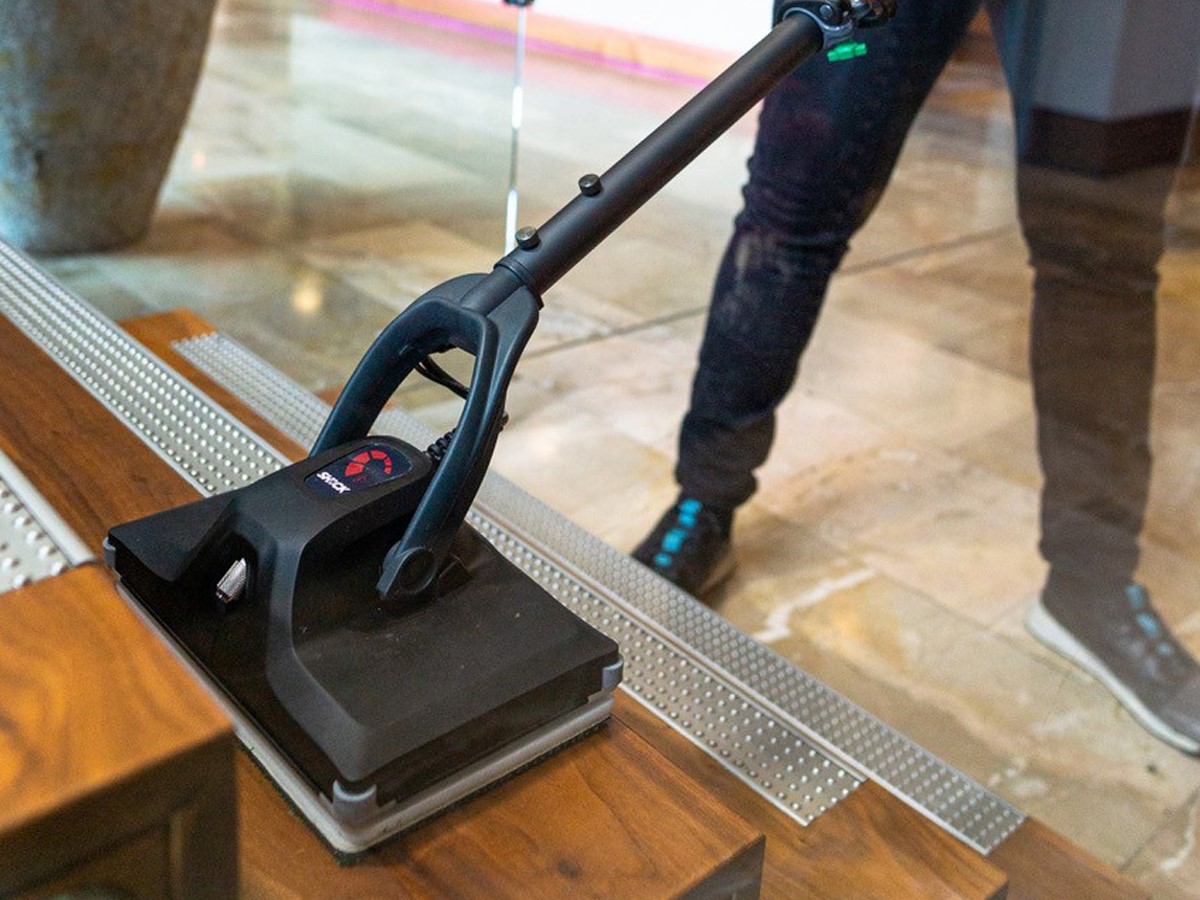
Whether provided by contractors or in-house, facilities management and cleaning services are industries ripe for disruption.
Despite the availability of technology, these industries have been slow to adopt it due to several obstacles, including a lack of digital skills, competing priorities, and cost-cutting efforts.
However, there is an opportunity to fully integrate facility management systems using service robots and smart technologies, which can lead to increased productivity, cost reduction, and the development of better value-added information.
One innovative approach is the use of robotic automation and augmented reality to manage repetitive and hazardous tasks, freeing up personnel for more complex and skilled jobs.
This article highlights the benefits of these technologies and offers suggestions for how facilities management leaders can successfully implement them.
A target for disruption
By embracing these emerging trends, facilities management companies can streamline operations, reduce downtime, and enhance the quality of their services.
However, these factors make facilities management an attractive target for disruption. Customers have already started to demand this disruption, but the question remains whether facility management companies are up to the challenge.
There is a significant opportunity to develop technology and processes that can fully integrate facility management systems.
This integration can optimise the use of service robots and smart facility technologies throughout the facility, leading to increased productivity, quality, cost reduction, and the development of better value-added information.
One such innovative approach is the use of robotic automation, which can handle repetitive tasks and free up personnel for more complex and skilled jobs.
Additionally, augmented reality can assist facility managers in remotely controlling and monitoring automation systems from afar, increasing efficiency and reducing the need for much on-site personnel.
These represent a portion of the untapped potential for digital transformation and the integration of advanced technologies. As such, there is a significant opportunity for businesses in this industry to embrace disruption and improve their services.
A preferred solution
Robotic automation is increasingly becoming the preferred solution for performing repetitive and hazardous tasks in a variety of industries.
Currently, Asian and European companies are leading the way in manufacturing and adopting robotics for services such as cleaning and security, with widespread adoption expected to occur within the next decade.
Leading companies are actively integrating robotics into their facilities management operations to perform tasks such as floor cleaning, window washing, power washing, and even drones to vacuum ceilings.
Ongoing innovations in robotics include developing both hardware and software for internal and external machines. The benefits of such robots are many, including the potential to reduce operating expenses, freeing up existing staff to focus on higher-value activities, and mitigating some of the risks associated with these tasks.
- Repetitive tasks are prime opportunities for integrating robots into operations, as they typically follow the same process every time. A few companies are currently designing and building robots to automate repetitive tasks such as those performed in bathrooms and on floors.
- Hazardous tasks, such as stripping wax or HVAC duct cleaning, pose potential risks to human workers. The use of robots for these jobs could enable companies to reduce costs and minimize risk, while maintaining productivity and efficiency.
With the rapid evolution of technology, there has been an emergence of end-to-end augmented reality (AR) solutions that have the potential to revolutionise facilities management. AR is different than virtual reality (VR).
AR uses a real-world setting as opposed to VR, which is entirely virtual (not physical form). AR users can control their presence in the real world; VR users are controlled by the system. AR enhances both the virtual and real world, while VR only enhances a fictional reality.
Leading technology players are currently experimenting with various applications of AR to support workers in selected tasks.
For instance, a remote-assisted maintenance toolkit, which comprises endoscopic and thermal cameras, a microphone, and a portable computer, enables an equipment operator to connect remotely with an expert who can guide them through the maintenance procedure.
This technology has the potential to greatly enhance the maintenance process by providing real-time support from an expert, regardless of their physical location.
In addition, AR maintenance also offers operators support through an integrated equipped with special glasses and software that provides detailed guidance on proper maintenance procedures. By leveraging this technology, workers can seamlessly access vital information and instructions, which can enhance their productivity and reduce errors.
Overall, the development of end-to-end AR solutions represents a significant opportunity for facilities management companies to streamline their operations, reduce downtime, and enhance the overall quality of their services.
As the facilities management industry continues to evolve, leaders cannot simply flip a switch to harness these emerging trends. Instead, companies may need to adjust their strategy, organisational capabilities, and culture to stay competitive.
Furthermore, as some of these trends are still in their infancy, executives should focus on laying a solid foundation to enable their organization to adopt successfully and implement these trends. To this end, several actions can be taken:
- Conduct a comprehensive review of the organisation’s existing strategy, culture, and capabilities to identify areas that require improvement or modification.
- Develop a clear roadmap that outlines the steps required to successfully adopt these emerging trends, including the necessary investments in technology, talent, and infrastructure.
- Invest in the necessary talent to support these emerging trends, including individuals with experience in areas such as robotics, AI, and data analytics.
- Foster a culture of innovation and experimentation where new ideas are welcomed and tested.
- Establish clear metrics to measure the success of these emerging trends and ensure that the organisation is continuously monitoring and adjusting its strategy to achieve its objectives.
By taking these actions, facilities management leaders can effectively position their organisations to harness these emerging trends and drive growth in the years ahead.
Jon Hill is the CEO of Cobotiq and presents to business managers how to create and implement profitability information. He is a frequent speaker and presenter on the future impact of automation and technology in the cleaning industry.
Comment below to have your say on this story.
If you have a news story or tip-off, get in touch at info@incleanmag.com.au
Sign up to INCLEAN’s newsletter.


